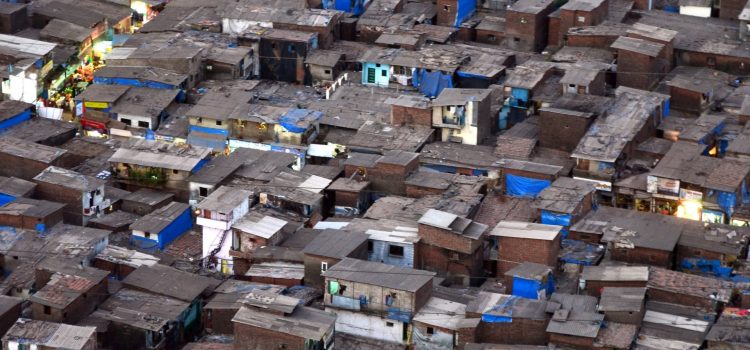

This article is an excerpt from the Shortform book guide to "Behind The Beautiful Forevers" by Katherine Boo. Shortform has the world's best summaries and analyses of books you should be reading.
Like this article? Sign up for a free trial here .
Who is Asha in Behind the Beautiful Forevers? What are Asha’s aspirations and dreams?
Asha was a powerful figure in the Annawadi slum. She ran the slum as a slumlord at the direction of authorities and politicians. Asha in Behind the Beautiful Forevers aspired to amass wealth and power to overcome economic hardship.
Read more to fully explore the character and aspirations of Asha in Behind the Beautiful Forevers.
The Aspirations of Asha in Behind the Beautiful Forevers
One powerful figure in the local community was Asha. In Asha’s childhood, the women in her family went hungry when there wasn’t enough food to go around. She wanted to amass enough money and power to avoid economic hardship, become a slumlord, and eventually, live outside the slum and reach the middle class. A “slumlord” was the person who ran the slum at the direction of authorities and politicians. It wasn’t an official position, but everyone understood the role.
Asha found herself on the path to this role after falling on hard times. Her husband was an alcoholic and was often too drunk to work, affecting the family’s economic security. In her twenties, Asha turned to sleeping with powerful figures, like police officers and politicians, to support her family. The money she brought in helped put her daughter, Manju, through college. (Shortform note: The author also implies that the extramarital affairs of Asha in Behind the Beautiful Forevers ingratiated her with these figures, helping herself gain political or social power.)
Asha’s Strategies
Asha in Behind the Beautiful Forevers aspired to reach the middle class by broadening her network of connections through her political party, Shiv Sena—which promoted ethnic cleansing and distrusted Muslims, making the Husains suspicious of Asha’s work—and by working to make locals support the party. One way she did this was by helping people solve their problems, which in turn could make them sympathetic to her party. For example, she held visitation hours in her hut to help people resolve disputes or seek assistance.
Once, an acquaintance of Asha’s, Mr. Kamble, approached her about a business loan. Specifically, he wanted Asha to give him money from a government-backed loan program for small entrepreneurs even though this had nothing to do with how he’d use the money—he was out of work and needed to pay for heart surgery. At the time, the Indian government was trying to promote a story of development by lending money to small businesses, but it wasn’t scrupulous about who got the money or what they used it for. The money was often used for other purposes in exchange for a cut for the officials who handled it.
Though Asha had helped Kamble get a job in the past, she refused his request for a loan, hoping to get a bigger cut later as he grew more desperate. She told him to go to a temple and pray that he would get the money he needed for his heart valve. However, he eventually died without the money for surgery. Asha also staged last-minute events, like protests and rallies, to show support for Shiv Sena politicians.
Asha in Behind the Beautiful Forevers wasn’t averse to exploiting the people around her for her own gain. In the long term, her goal was to sow discord that she could then help resolve for payment, building her family’s wealth so they could one day afford to live outside of the slum. She also hoped to gain political power by being elected a Corporator and overseeing a political ward, or voting district. Though Asha also was supposed to be a teacher at an elementary school, she had her daughter, Manju, do the teaching instead so she could tend to her political obligations.
The political work of Asha in Behind the Beautiful Forevers reflected part of a larger effort to address issues in India, like poverty and women’s empowerment. However, most of these problems, as well as big ones like corruption and exploitation, continued to go unaddressed. For example, when the government initiated a group in which women pooled their money to give each other loans in times of need, Asha devised a system where women would pool money and give it to women outside of the collective at a high interest rate. But when the foreign press needed a tangible example of India’s progress on women’s economic security, the government would often send them to Asha to showcase her projects.
When journalists visited, Asha often introduced them to Manju, saying that her daughter was going to be one of the slum’s first college graduates and wouldn’t have to depend on a man for her living, which pleased the visitors.
In another instance, Asha helped to cover up fraud by the Corporator of Ward 76, the political district she lived and worked in. Certain elections in India were required to have only female candidates or only people from a certain caste. To be able to run in a low-caste-only election, the Corporator had faked his caste certificate and ancestry, and won. When his opponent challenged him in court, the Corporator asked Asha to organize a prayer vigil at a local temple to drum up support for his work. The Corporator didn’t show up as promised, but when he called at 1 a.m. to say he wouldn’t be able to make it, he could hear over the phone that a large crowd had gathered and was pleased that he still had the support of the local people.

———End of Preview———
Like what you just read? Read the rest of the world's best book summary and analysis of Katherine Boo's "Behind The Beautiful Forevers" at Shortform .
Here's what you'll find in our full Behind The Beautiful Forevers summary :
- A nonfiction account of the lives of residents of in one Mumbai slum
- How the globalized world affects many people in India
- A story of poverty, exploitation, and the struggle to survive






